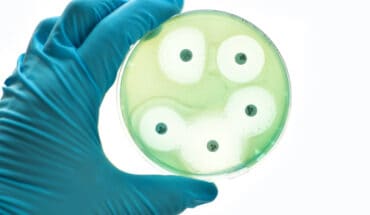Scientists from the University of Bradford say they are ‘a step closer to finding a vaccine’ for tuberculosis after discovering a new variant of the disease in Africa.
The new strain, known as Lineage 8, was found by chance in Rwanda – it has taken researchers two years to sequence and analyse its genome.
The findings are due to be published in Nature Communications journal on Tuesday June 9.
Conor Meehan, lecturer in molecular microbiology in the Faculty of Life Sciences at the University of Bradford, one of the senior authors on the paper, described the discovery as a “missing link” in the evolution of one of the world’s oldest and most deadly pathogens.
“Tuberculosis is one of the oldest pathogens to affect humans. The pathogen has several different strains or ‘lineages’. We have known about six lineages for over a decade and a seventh was discovered in Ethiopia just over five years ago. Now we have found an eighth lineage in Rwanda and Uganda, which seems to be much older that the other lineages and so we think it could be a missing link in the evolution of what causes TB.”
Scientists took two years to synthesise and analyse the new genome, confirming its lineage status. In the process, they also discovered that while the strain is already resistant to modern treatments, it seems to infect far fewer people than other strains.
Conor, originally from Dublin, Ireland, said: “We are definitely closer to figuring out where TB came from. Understanding this new lineage tells us more about what we need to do in terms of coming up with cures. We all want to get to a vaccine and there are hints in this if it’s not spreading as much, it’s a strain we can work with towards achieving that end.”
TB infects about 4,500 people a year in UK and 10m worldwide with 1.5m deaths. In Bradford, it infects around 100 people a year. The disease is thought to have evolved from Mycobacterium canettii, discovered in 1969, which likely has the ability to live in the environment, unlike TB, which needs human hosts.
Conor added: “There is still a lot of work to do in terms of finding out where TB came from but this discovery takes us closer to that. We tend to think of diseases in human terms. While humans reproduce every 20 years or so, bacteria reproduce every day or even every few minutes. When they are exposed to medication, such as penicillin, they undergo random mutations in their DNA. Some of those will allow them to become resistant.”
Although only discovered at the end of the 19th Century, evidence suggests TB has been infecting humans for thousands of years. Typically, it is spread through droplets in the air and because it is very slow growing, it can take up to a year before symptoms appear, by which time it will already have caused significant damage.
The research paper, A sister lineage of the Mycobacterium tuberculosis complex discovered in the African Great Lakes region, is published in Nature Communications on June 9. This work resulted from close collaboration between the University of Bradford, the Institute of Tropical Medicine, Belgium, the Swiss Tropical and Public Health Institute, Switzerland, the CNRS at the Institut Pasteur de Lille and the Rwanda Biomedical Centre.
- Breaking the ice for men’s mental health - 26th December 2025
- New bowel cancer test for early detection - 26th December 2025
- New method accelerates resistance testing in UTIs - 26th December 2025







